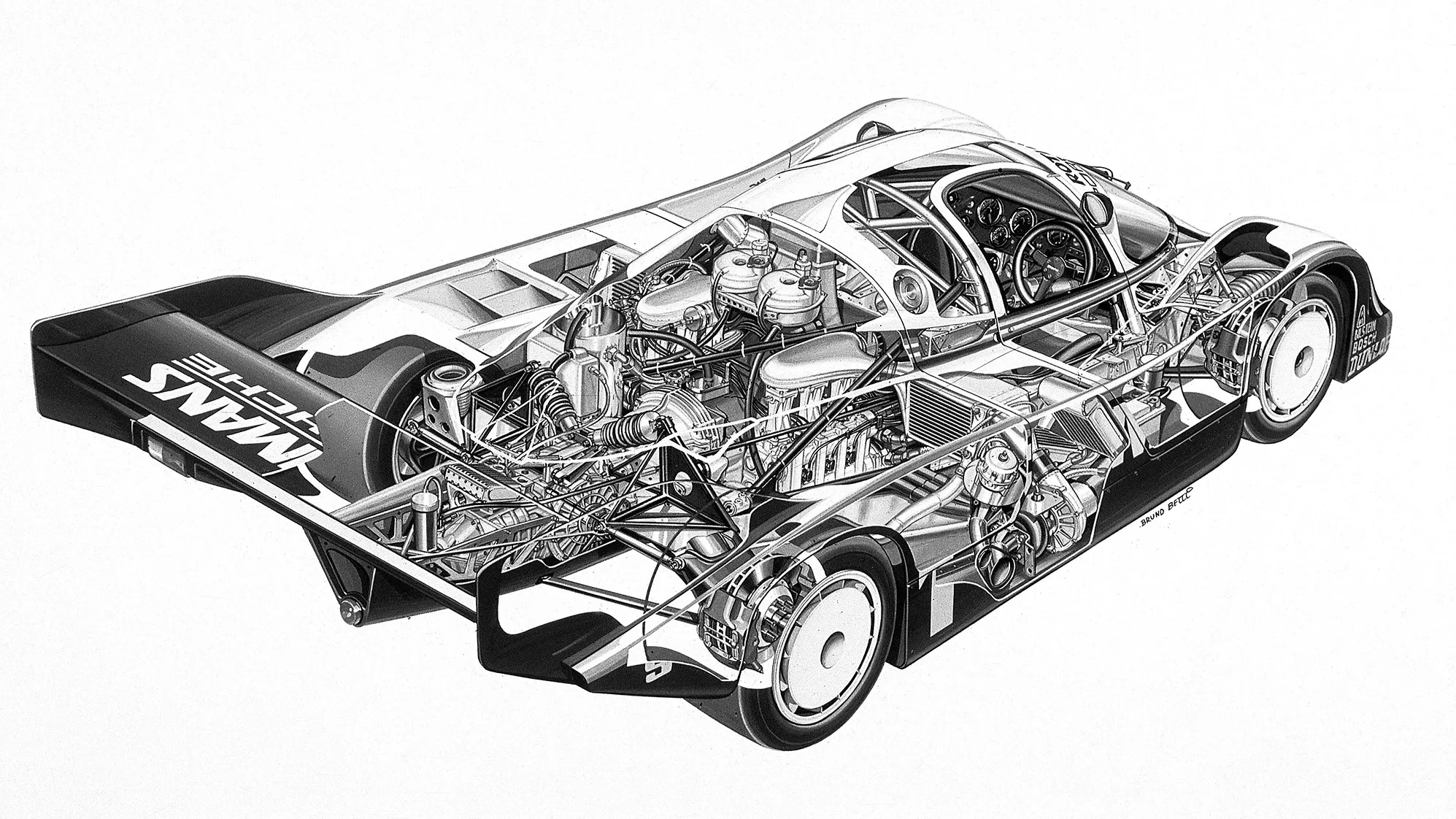Downforce
Unhindered air flow on the underside of the 956 generated high downward pressure on the car and enabled cornering at unprecedented speeds. The air flowing in at the front ran through a left and right air duct on the vehicle floor to the rear, where the ducts were larger and had downward-facing openings. There, the air spread out and generated downforce. Suspension components that could interfere with the air flow were removed. When it reached a speed of 321,4 km/h, the 956 could theoretically drive on the ceiling due to the ground effect.

+
+
Downforce
Gearbox
In the turbo engine, the dual-clutch gearbox enabled shifting without traction interruption. The driver pressed two buttons on the steering wheel, enabling faster and less distracted shifting.

+
+
Gearbox
Innovation
With the introduction of the sports car class group C for the World Endurance Championship in 1982 and new complex rules governing fuel consumption, Porsche saw the opportunity to build an innovative racing car: With the emergence of the Porsche 956 in 1981, the idea for what would later be known as the “racing car of the century” was born. The goal was not merely to participate in the demanding World Sportscar Championship, but also the American IMSA series and other series that allowed Group C vehicles to take part. After just nine months of development, by the first race in Silverstone in 1982 it had already matured into the triumphant car that in the years that followed would become the most successful Porsche racing car to date. Twelve years would pass between the first victory of a 956 and the final victory at Le Mans with the last version of the Porsche 962.
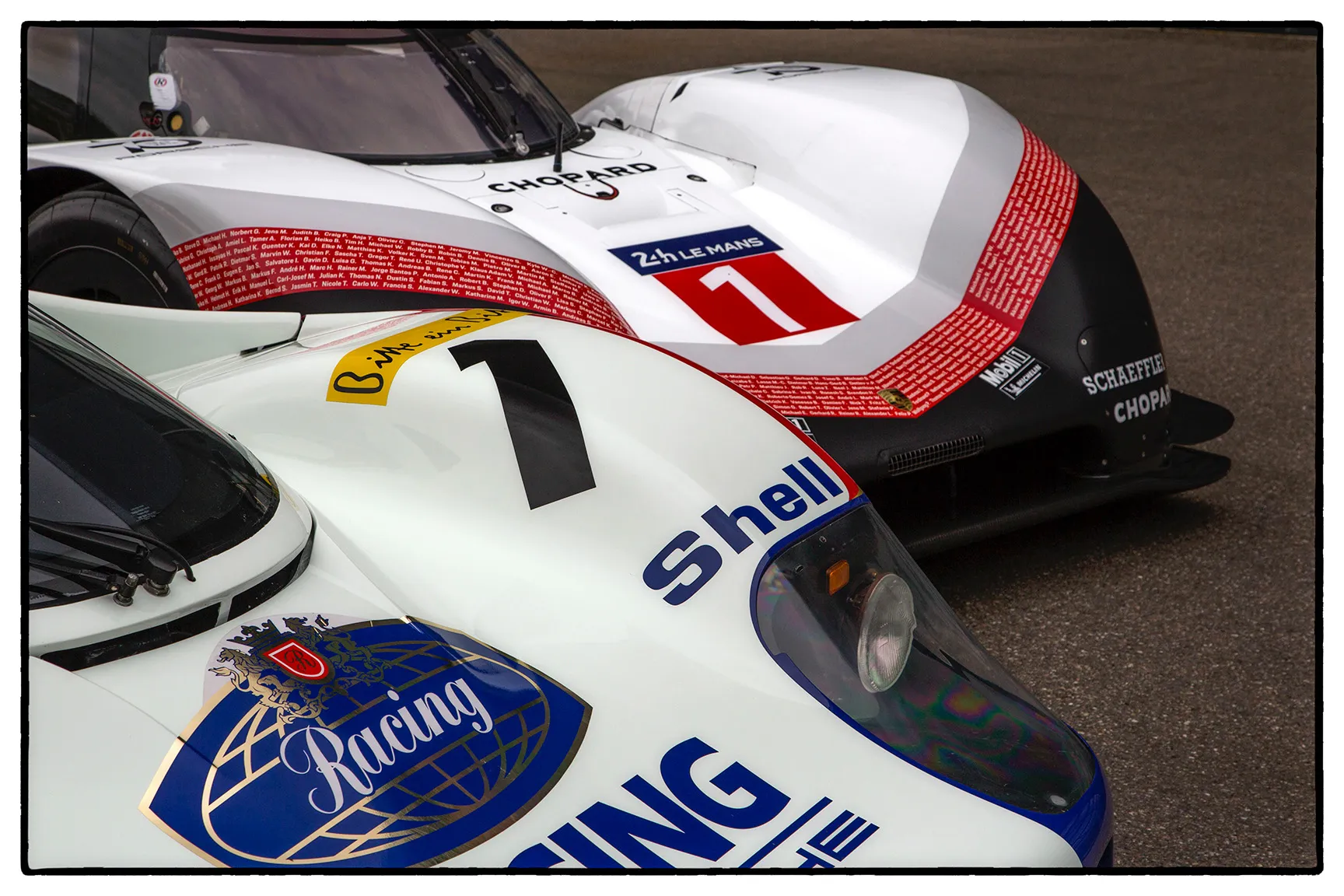
+
+
Innovation
Engine
The six-cylinder 4V boxer engine, type 935/76, was a Porsche 911 engineoptimised for racing. The same type was used at Le Mans in 1981. Since fuelconsumption was the focus of the Group C regulations, more flexible turboengines were more advantageous. Their output could be easily regulated intesting and races via the boost pressure.
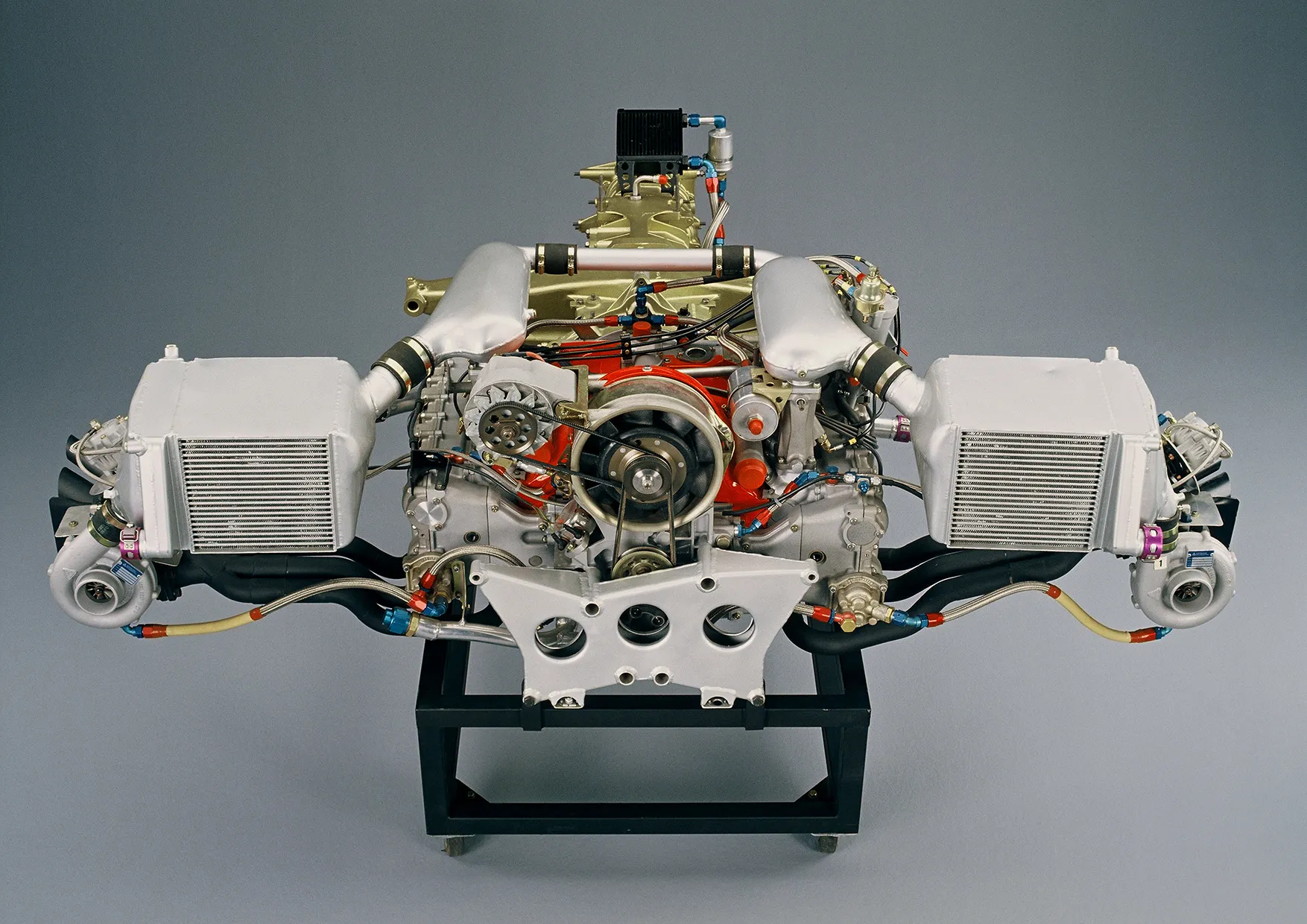
+
+
Engine
Monocoque
Porsche replaced the tubular frame as a chassis with a monocoque made of duraluminium. The aluminium monocoque was 80% stiffer than its conventional predecessor made of tubular frame and was intended to provide better cornering speeds at a weight of 59 kg.
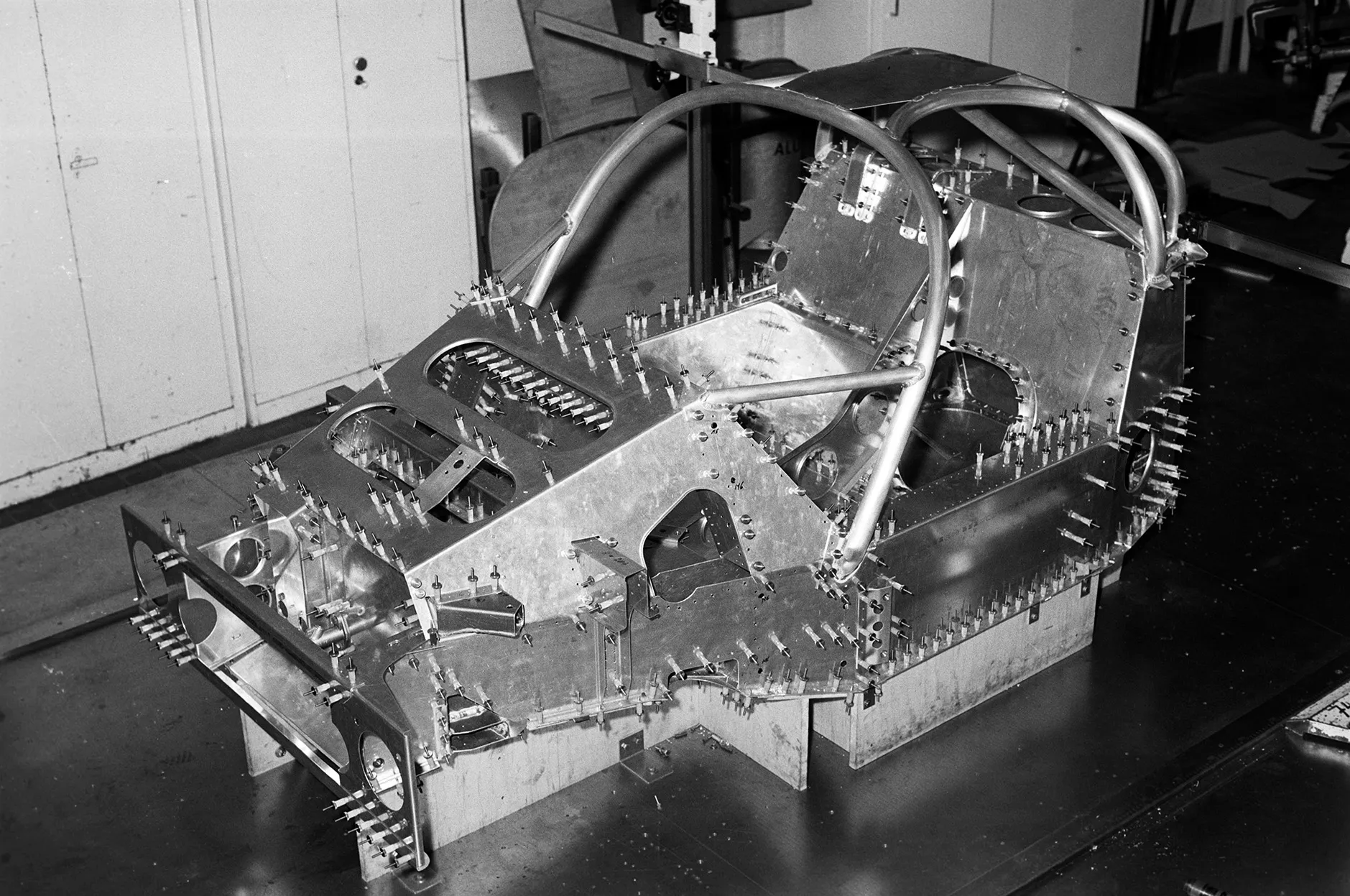
+
+
Monocoque
Rear wing
A rear wing, which could be no higher than the roof height, generated high downforce while the car was in motion. Nevertheless, the 956's balanced aerodynamics enabled it to reach a top speed of 355 kilometers per hour.
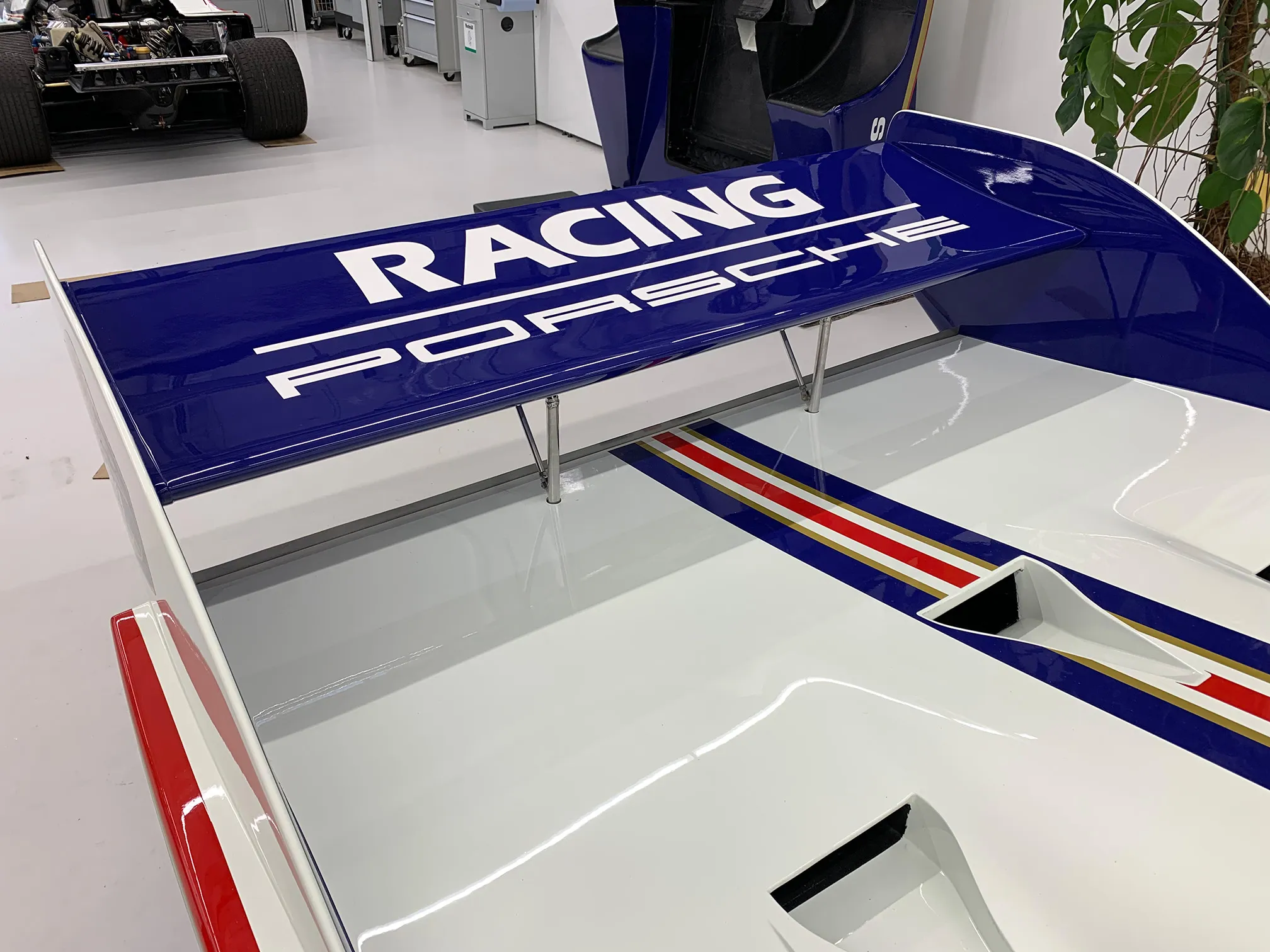
+
+
Rear wing
